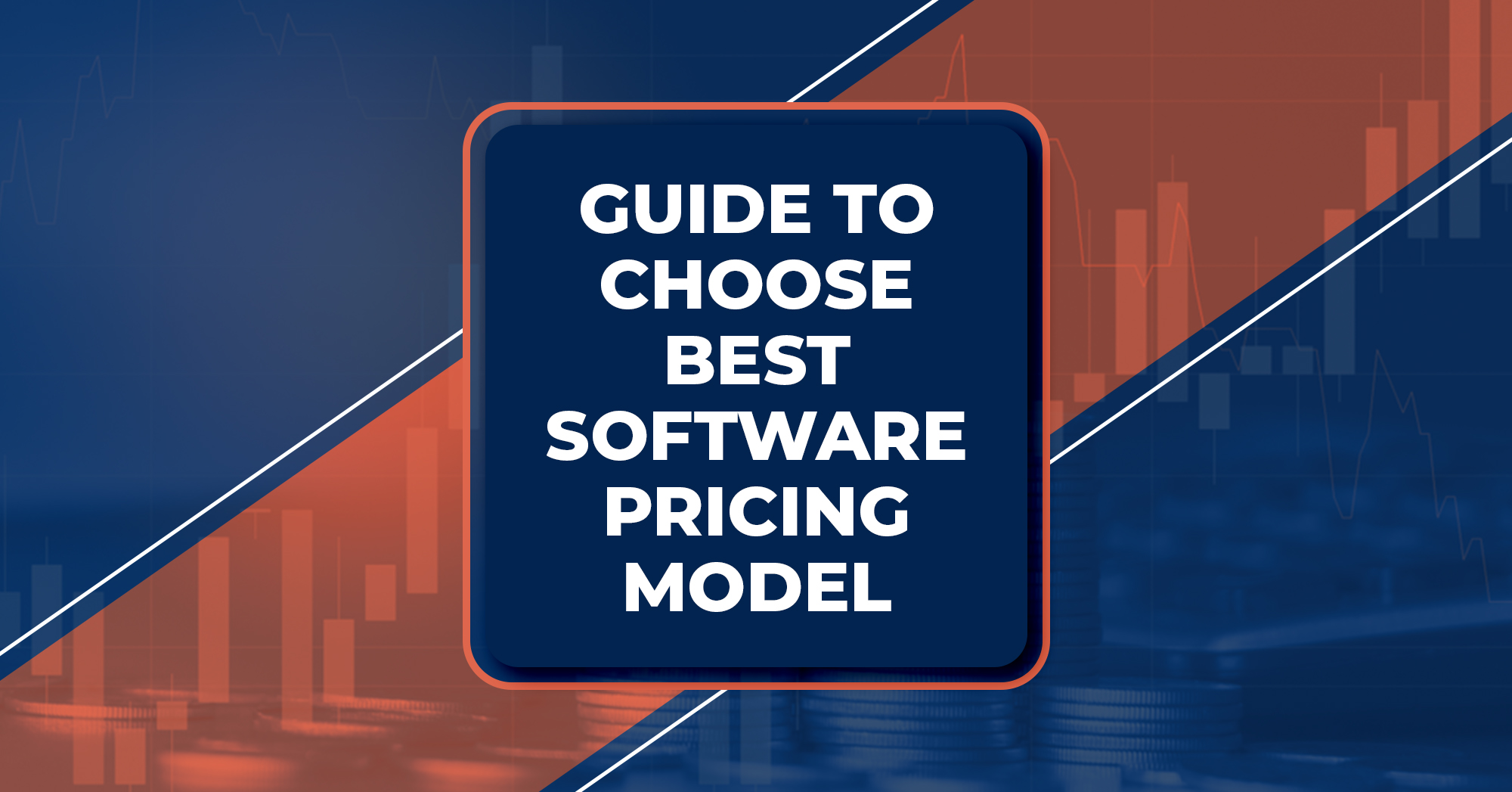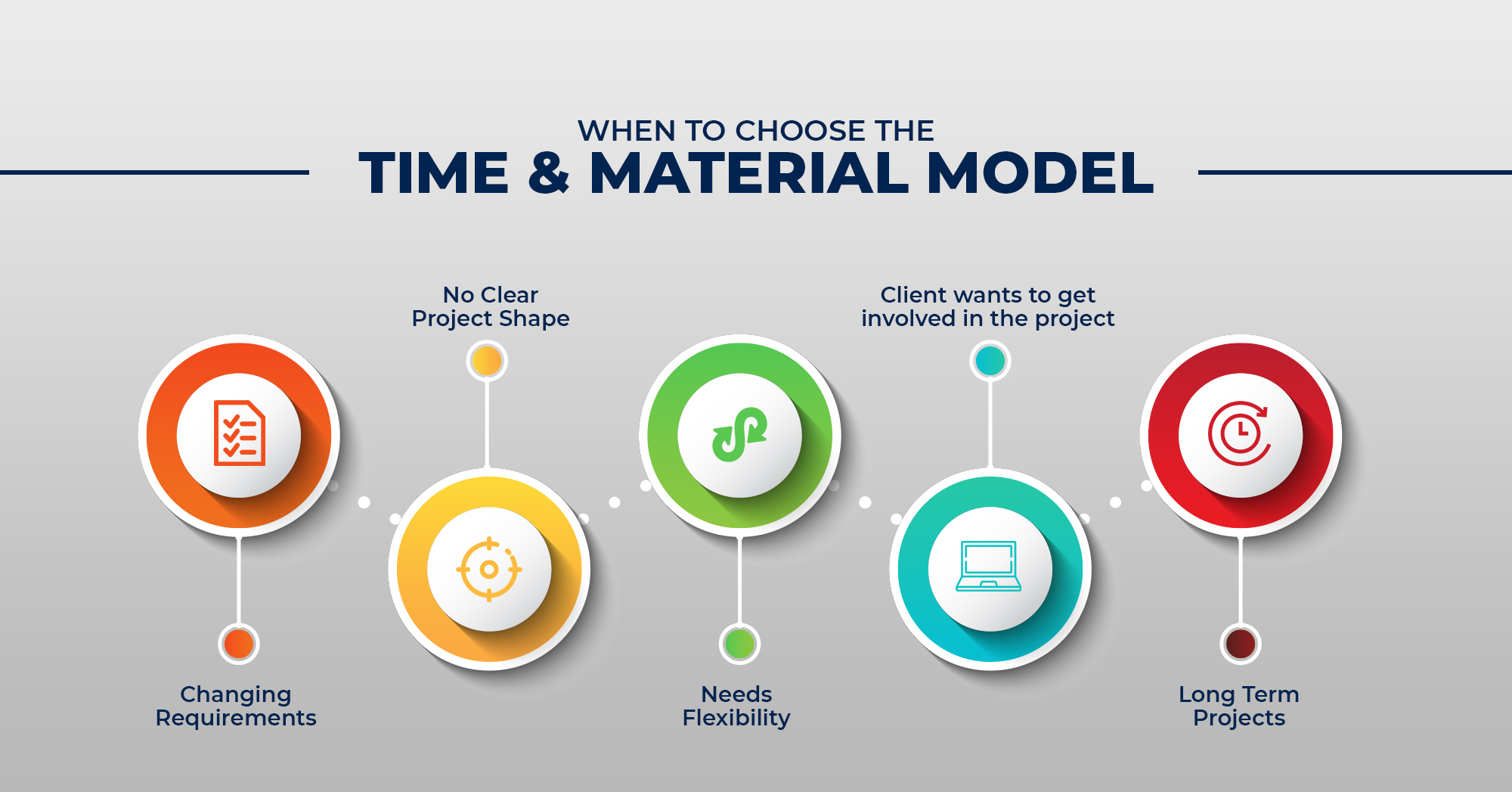Table of Contents
Do you want to get your software development outsourced to a company or third-party developing team? Then you must have a significant amount of money in hand. At the same time, a company or a team signing a contract with you will finalize the agreement according to the software pricing models they are using.
Having enough knowledge of these pricing models and the budget offered by the client will lead you to end up with a great decision. There are various software pricing models in the industry Time and Material, Fixed Price, Mixed Pricing, and Dedicated Team Pricing.
4 Types of Software Development Pricing Models:
Time And Material
The Time and Material model offers flexibility by billing clients based on actual time spent and resources used during the development process. While adaptability is a highlight, certain challenges can arise:
Issues That May Arise When Finalizing Time and Material Pricing Contract
Ambiguous Deadlines and Budgets:
The absence of a fixed budget and timeline can complicate managing client expectations and project costs.
Monitoring the Development Process
A more hands-on approach to monitoring project progress is required to ensure efficient allocation of resources and effective cost control.
When do Esketchers Suggest Using the Time and Material Model?
Esketchers uses the time and material model when a client needs a certain amount of developers for his/her project. This method is also in the activation phase when a certain amount of time is spent while delivering the desired product. We at Esketchers believe that it’s a direct proportion between the final budget and the time and labor we have utilized.
Following are the quick points that you should also keep in mind while opting for the Time and Material model:
- Evolving Scope: When project scope is expected to evolve or expand over the course of development.
- Dynamic Requirements: When project requirements are subject to change due to evolving circumstances or market dynamics.
- Flexibility Priority: When the project demands flexibility and adaptability to accommodate changes smoothly.
What Are You Paying For?
In the Time and Material model, your payment reflects the actual development time and resource consumption. This model empowers you to make adjustments as the project evolves, facilitating a more agile and adaptive development process.
Fixed Price Model:
As the name suggests, the fixed amount is decided at the start and it will be paid after the completion of the work assigned. However, it doesn’t mean that you will develop large applications on small budgets.
The Fixed Price model allows flexibility to both the developers and client sides. The final amount will be decided after carefully analyzing the project scope. Mostly small-scoped projects or projects with minimum features are catered to under this model.
Using this model makes the requirement process a bit longer compared to the Time and Material model. Everything has to be decided at the start and both parties have to make the final agreement. In case, the client wants to add any other feature, the developer can ask for an extra amount as well. This scenario will lead to signing a fresh agreement as well.
Summing up, the Fixed price model is all about time and budget proportionality. They are directly proportional to each other.
Issues That May Arise When Finalizing Fixed Price Contract
Delay in Product Release
In cases where project scope evolves or unforeseen challenges emerge, adhering to the fixed budget might lead to delays in product delivery.
Compromise Over Quality
Developers could potentially compromise on software quality to remain within the confines of the fixed budget, resulting in suboptimal outcomes.
Restricted Creativity
The Fixed Price model might inadvertently limit innovative problem-solving. Developers might hesitate to explore novel solutions due to budget constraints.
When do Esketchers use the Fixed Price Model?
Esketchers uses the Fixed price model whenever the client asks for small website development (more specifically any small scoped WordPress website). The budget is finalized after carefully analyzing the features that need to be developed. The requirements of the client are clear and there is no ambiguity or change in requirements expected afterward. The Fixed Price model is normally well suited for small MVPs.
Below is the checklist that you should keep in mind before choosing the fixed price model:
- Clearly Defined Scope: When the project scope is well-defined and unlikely to change significantly.
- Precise Requirements: When you have a comprehensive understanding of project requirements from the project’s outset.
- Budget Certainty: When budget predictability is crucial due to financial constraints or organizational guidelines.
What Are You Paying For?
Under the Fixed Price model, your payment covers the final product as specified within the mutually agreed-upon scope and specifications. Providing thorough and detailed requirements is essential to ensure an accurate cost estimate.
Looking For a Web Development Team
Share the details of your request and we will provide you with a full-cycle web development team under one roof.
Dedicated Team Pricing Model:
Sometimes you need a whole team of professionals for your long-term projects and want to hire a team for that. Then Team pricing model is used and for implementing this model you need an individual to be good enough at administration and managing the project or you can hire a manager or team lead as well and pay for that.
The model itself gives authority to the client to select the team, increase or decrease the members, and divide the workload among the team members (if you choose to manage your project yourself, you can hire a project manager as well). It is somehow similar to building your own team in an office. However, the only difference is that everyone is working remotely for you while making you able to benefit from their services.
The team pricing model involves monthly payments approved and finalized by the client.
Issues That May Arise When Finalizing Dedicated Team Pricing Contract
Responsibility
Clients need to actively manage and oversee the dedicated team, demanding a certain level of time and involvement.
Projection of End Cost
Estimating the final project cost can be intricate due to the dynamic nature of evolving project scope and requirements.
When to Go for the Dedicated Team Pricing Model?
Control and Involvement: When a high level of control and direct participation in the development process is a priority.
Iterative Development: When the project necessitates continuous collaboration and iterative development, where frequent changes and improvements are expected.
What Are You Paying For?
In the Dedicated Team model, your payment predominantly covers the expertise and efforts of a dedicated team exclusively committed to your project. This model emphasizes transparency, adaptability, and the potential for refined collaboration.
Mixed Pricing Model:
You might understand it easily by its name, that it is the combination of two pricing models. But the question is which of the two software pricing models? So, a mixed model is achieved by combining the time and material model with the fixed price model.
This hybrid or mixed model is used when the customer has defined a specific time frame for the final release but the requirements for the project are unclear or the scope is not defined.
In these types of situations, the mixing of these two models helps the developers to accept the changes and fix the budget issues accordingly.
Issues That May Arise When Finalizing Mixed Pricing Contract
Delay in Time-to-Market the Product:
Balancing fixed elements with adaptable components might inadvertently lead to extended development timelines.
When to Go for the Mixed Pricing Model?
- Balanced Scope: When the project’s scope is relatively defined, potential changes are anticipated or evolving requirements are expected.
- Cost Management and Flexibility: When a balance between cost predictability and scope flexibility is essential.
What Are You Paying For?
In the Mixed Pricing model, your payment encompasses both fixed-budget components and adaptable elements. This approach provides a nuanced equilibrium between budget predictability and scope adaptability.
Wrapping Up:
Selecting the right software development pricing model is akin to navigating through intricate waters. The model you choose must harmonize with the unique attributes of your project, including its nature, scope, budget, and timeline. Each pricing model offers distinct benefits and challenges.
As you embark on your software development journey, remember that adaptability, transparency, and alignment with project prerequisites are pivotal to achieving success. By delving into these pricing models, you empower yourself to navigate the complex realm of software development, making a well-informed choice that resonates with your project’s distinct requirements and aspirations.
Esketchers mostly use the time & material pricing model and the fixed pricing model. However, the dedicated team model is only used when a client needs additional services along with the development of a long-term project.
Want to know about these models in detail Drop us a message or head down to our website to read the related articles.

